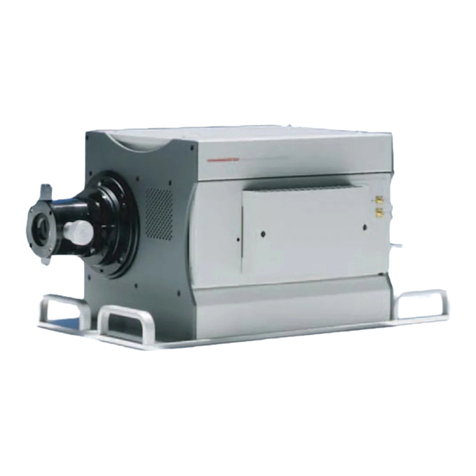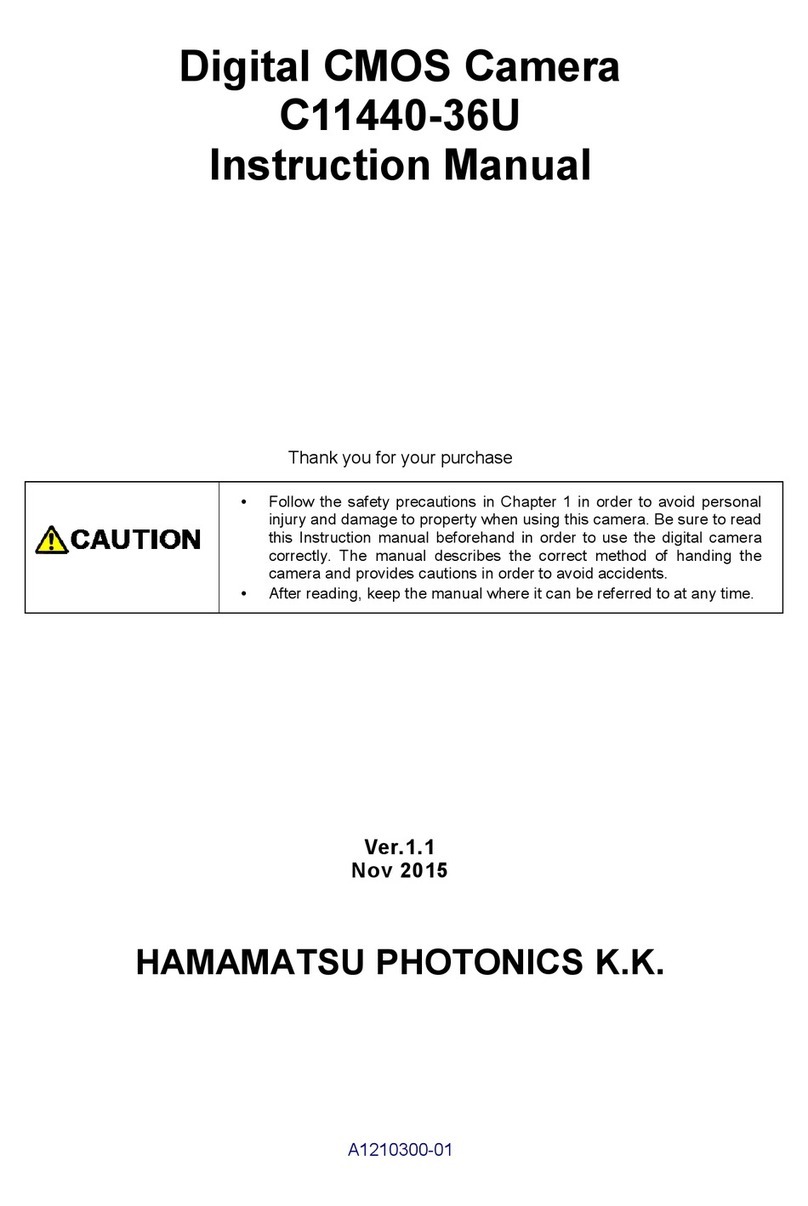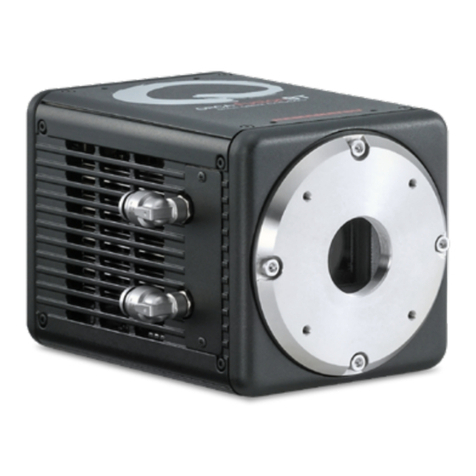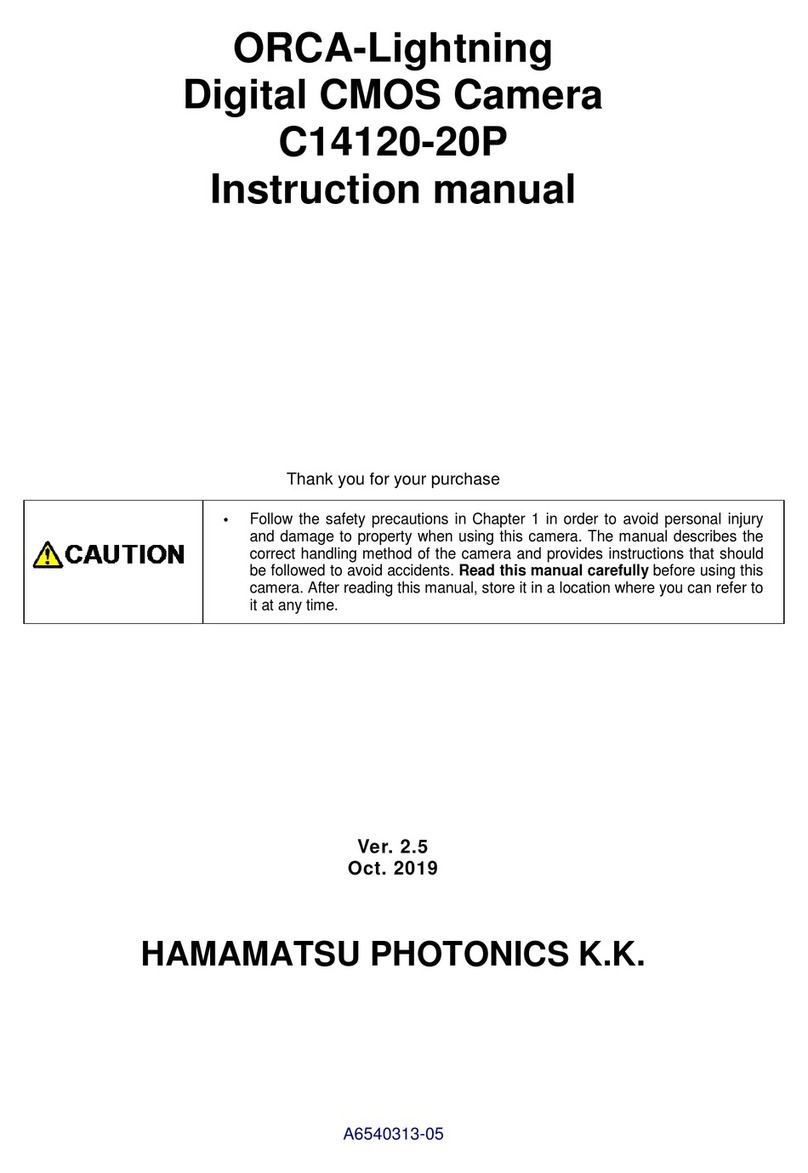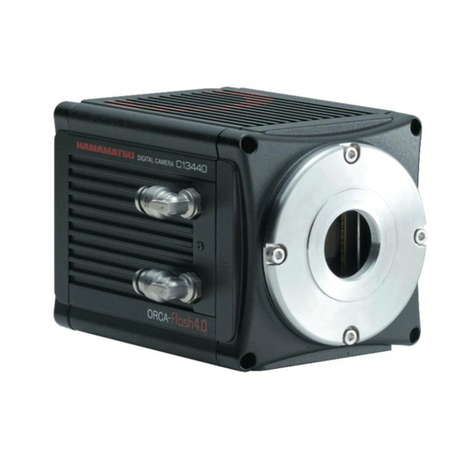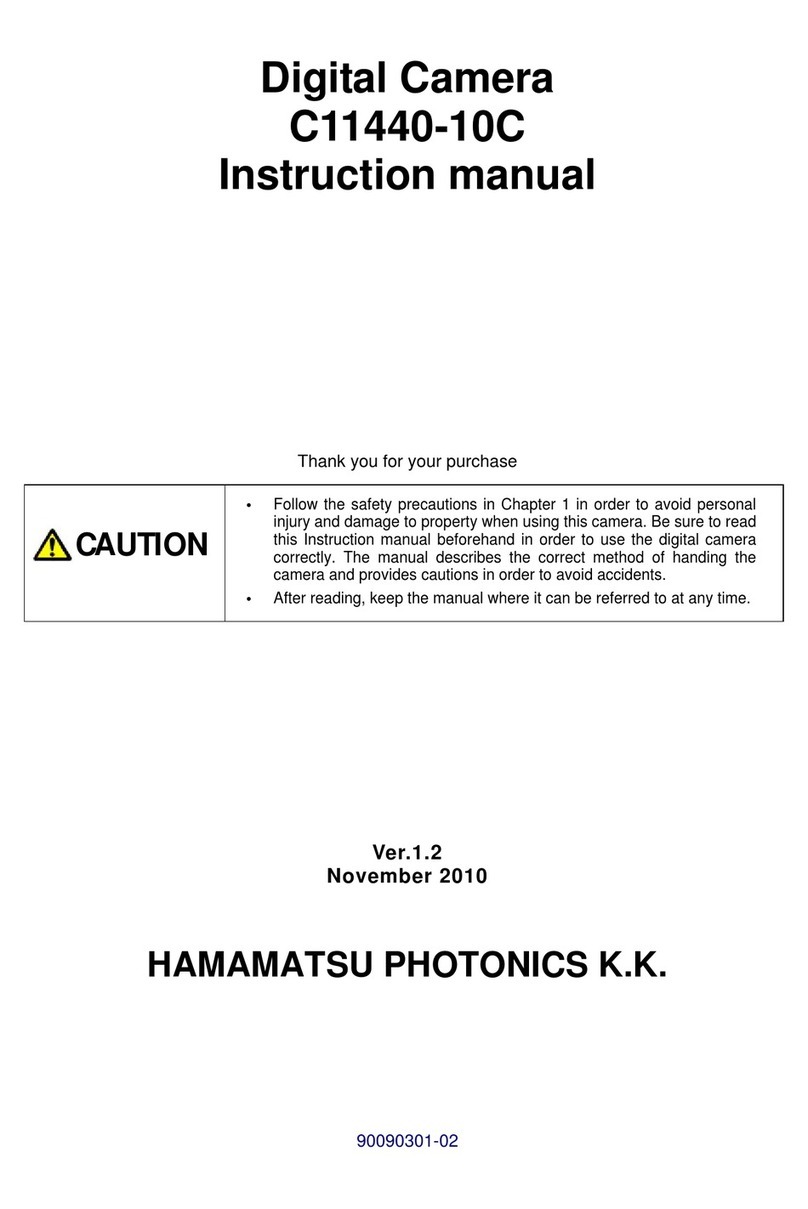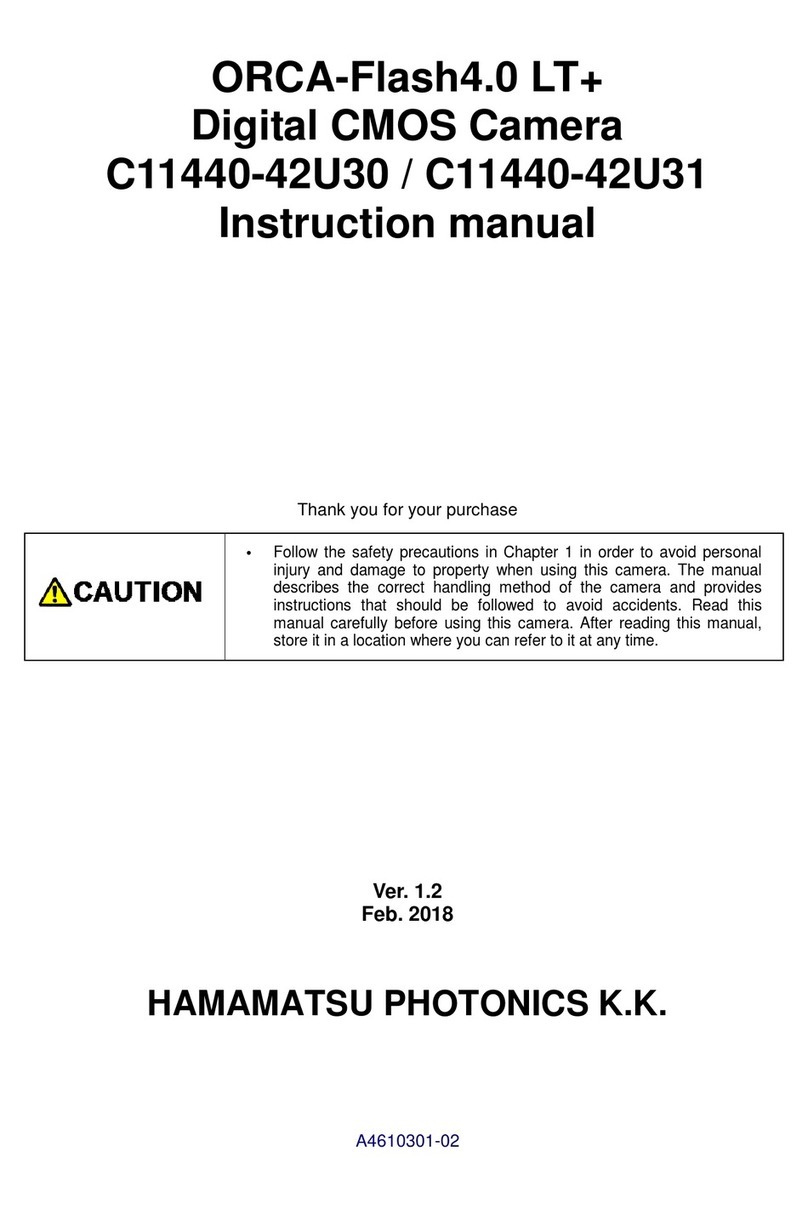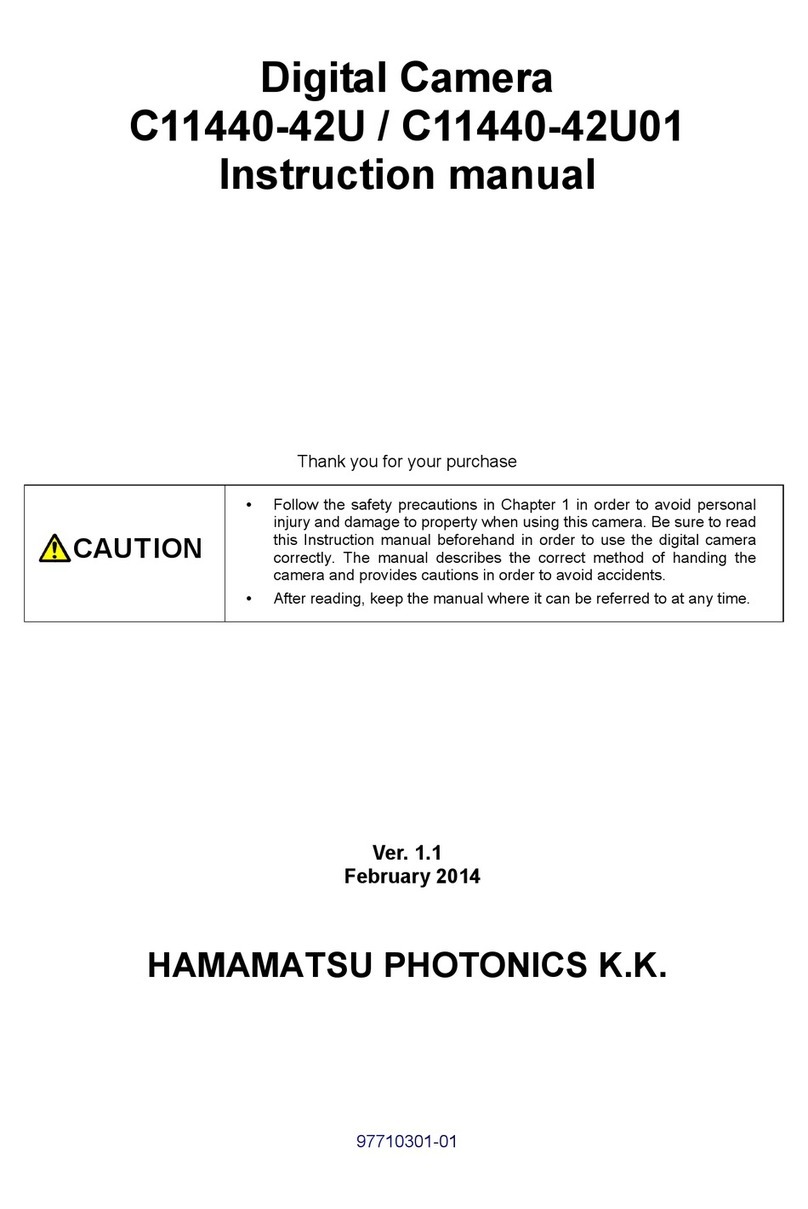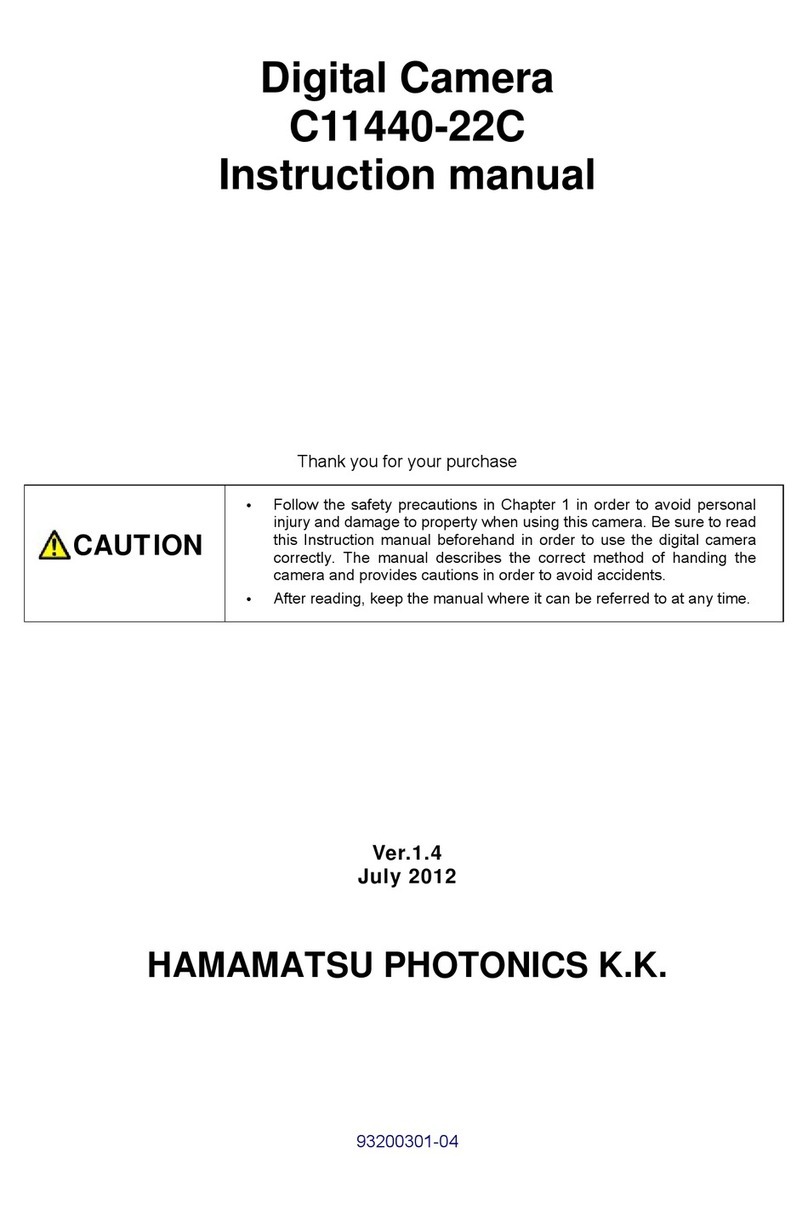
C11440-22CU/C11440-22CU01 Instruction manual_Ver.1.4
C
Co
on
nt
te
en
nt
ts
s
1. SAFETY PRECAUTIONS............................................................................ 1
1-1 INDICATION OF THE SYMBOLS.......................................................................1
1-2 CLASSIFICATION OF WARNING ......................................................................1
2. CHECK THE CONTENTS OF PACKAGE................................................... 5
3. INSTALLATION........................................................................................... 6
4. OVERVIEW.................................................................................................. 9
5. FEATURES.................................................................................................. 9
6. NAME AND FUNCTION OF THE PARTS................................................. 12
7. CONNECTION........................................................................................... 15
8. WATER COOLING.................................................................................... 18
8-1 CAUTIONS........................................................................................................18
8-2 CONNECTION OF WATER COOLING HOSES................................................20
8-3 DISCONNECTION OF WATER COOLING HOSES..........................................21
9. OPERATION.............................................................................................. 22
9-1 PRECAUTIONS.................................................................................................22
9-2 PREPARATION FOR IMAGING........................................................................23
9-2-1 WHEN USING AIR-COOLING..............................................................................................23
9-2-2 WHEN USING WATER-COOLING.......................................................................................23
9-3 END OF IMAGING.............................................................................................23
10. DESCRIPTION OF VARIOUS FUNCTIONS ............................................. 24
10-1 THEORY OF CMOS IMAGE SENSOR .............................................................24
10-2 NORMAL AREA MODE ....................................................................................26
10-2-1 READOUT METHOD (SCAN MODE) ..................................................................................26
10-2-2 FRAME RATE CALCULATION.............................................................................................27
10-2-3 CONFIGURING EXPOSURE TIME......................................................................................31
10-2-4 FREE RUNNING MODE ......................................................................................................32
10-2-5 EXTERNAL TRIGGER MODE..............................................................................................34
10-2-6 TRIGGER OUTPUT .............................................................................................................39
10-2-7 SLOW SCAN........................................................................................................................41
10-2-8 GLOBAL RESET..................................................................................................................42
10-3 LIGHT SHEET MODE .......................................................................................45
10-3-1 READ-OUT DIRECTION......................................................................................................45
10-3-2 FRAME RATE CALCULATION.............................................................................................46
10-3-3 READ-OUT TIME OF THE HORIZONTAL LINE...................................................................46
10-3-4 TIMING DIAGRAM...............................................................................................................47
10-3-5 PROGRAMMABLE TIMING OUTPUT..................................................................................49
10-4 REAL-TIME CORRECTION FUNCTIONS ........................................................50
11. PRECAUTION WHEN USING FL-400....................................................... 51
12. MAINTENANCE ........................................................................................ 52
12-1 CARE.................................................................................................................52
7

